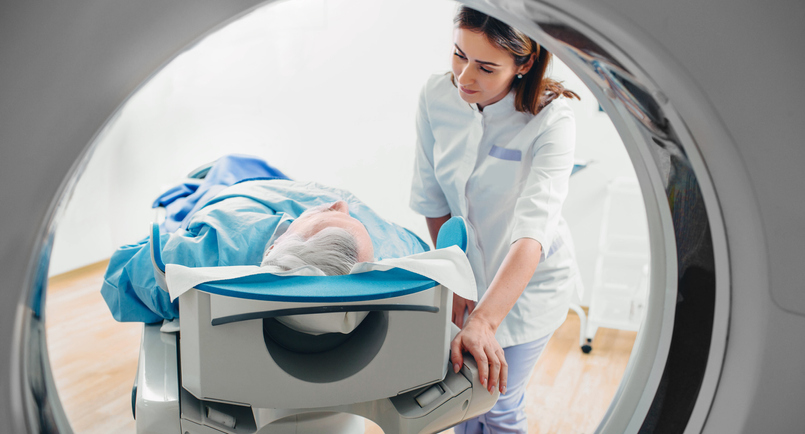Magnetic resonance imaging (MRI) is used to help diagnose and treat various medical conditions. The same as with any electronic tool or large appliance, there are different makes and models that work more effectively and obtain better results. At Intermountain Medical Imaging, we rely on a variety of MRI options that offer a wider opening, helping us deliver high-quality care to clients and medical providers alike. Using a wide-bore MRI allows us to obtain quality images and provide a more accurate diagnosis by providing a more comfortable experience for our patients throughout the scanning process.
What Is a Wide Bore MRI?
For doctors, magnetic resonance imaging (MRI) scanners often play a crucial role in treating patients. MRIs rely on large magnets and radio waves. They are used by our radiologists at IMI to view various body parts and structures. They are an instrumental tool in helping to diagnose and treat a variety of potentially serious health conditions, including:
- Damage to bones, joints, and discs;
- Diseases of the kidneys and liver;
- Cancers affecting the breasts, ovaries, prostate, and other body organs or systems;
- Issues within the blood vessels and heart;
- Problems concerning the brain and nervous system;
- Respiratory issues and damages to the lungs;
- Soft tissue injuries involving muscles, ligaments, and tendons;
- Spinal cord injuries;
- Strokes and other potentially life-threatening conditions.
Despite all the benefits of using MRIs, one of the drawbacks has traditionally been the machine’s narrow opening and sides. These can be intimidating to patients and can make it more challenging to accommodate larger-sized people, those in pain, and anyone suffering from limited mobility issues or claustrophobia. Offering a wide-bore MRI helps address these patient concerns, which often prevent people from obtaining the testing they need.
MRIs are shaped like a donut, with the open space in the middle referred to as the bore. The outer area consists of a cylindrical magnet, which is used to obtain and transmit images during the patient’s examination to a nearby computer. On a standard MRI, the bore size is roughly 60 centimeters in diameter or under two feet. With a large-bore MRI machine, the opening is 70 centimeters. This additional space makes a huge difference in better accommodating patients and making them more comfortable.
Benefits of Wide Bore MRI Scanning at IMI
Magnetic resonance imaging at IMI allows us to view body structures and obtain detailed images without exposing patients to radiation, which is used in conducting traditional x-rays and computed tomography (CT) scans.
When it comes to MRI scanning, there are numerous benefits to utilizing wide bore MRIs. These include:
- Better accommodations: Wide bore MRIs better accommodate larger sized patients and those suffering from obesity.
- Reduces discomfort: Wide bore MRIs reduce the fear and discomfort patients with claustrophobia often experience.
- Encourages broader testing and treatment: By broadening the number and type of clients served while increasing their comfort, wide bore MRIs increase the number of people who submit to testing and decrease the number of potentially serious health conditions that would otherwise go undetected.
- Improves image quality: Greater comfort during wide-bore MRI scans means patients are less nervous and less likely to shift or move around during the testing procedure, improving image quality results.
- More efficient testing: Improved efficiency and accuracy mean MRI testing can be done with fewer retakes or errors, cutting the amount of time patients need to remain in the scanner.
Contact Us Today for Help
At Intermountain Medical Imaging, we have been a leader in providing diagnostic testing and treatment services to people throughout Boise and surrounding areas for more than 20 years. For answers to your specific questions about MRIs and how MRI scanning could help you, reach out and call or contact our IMI offices online today.
